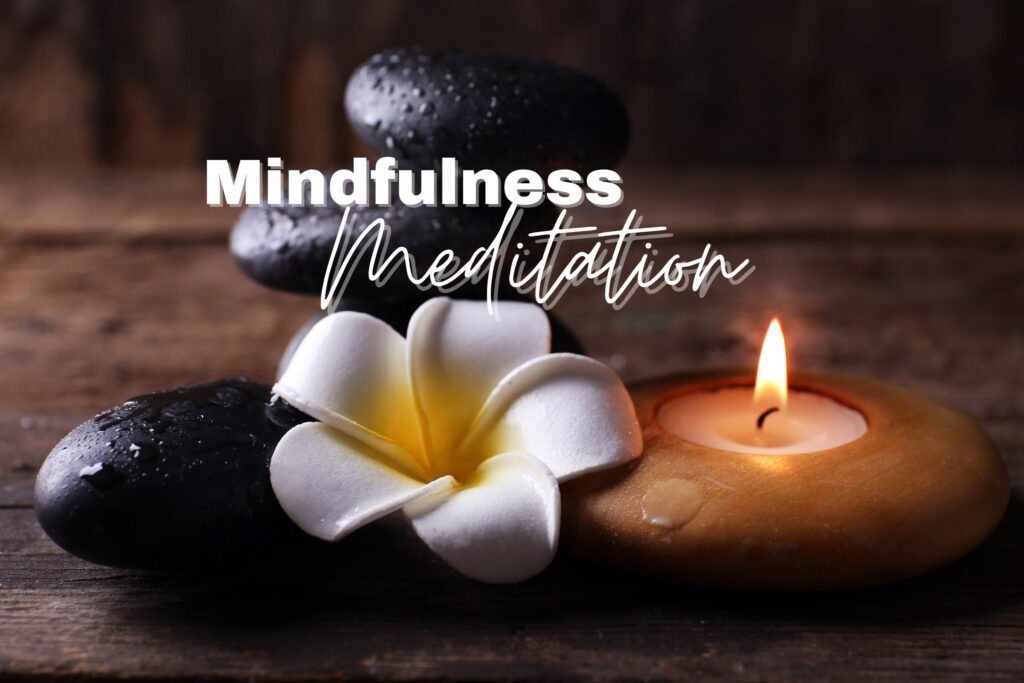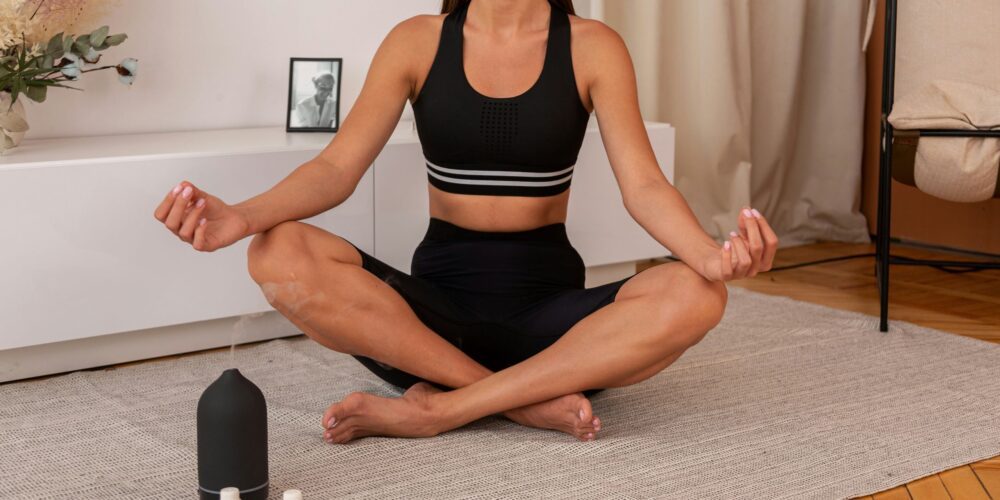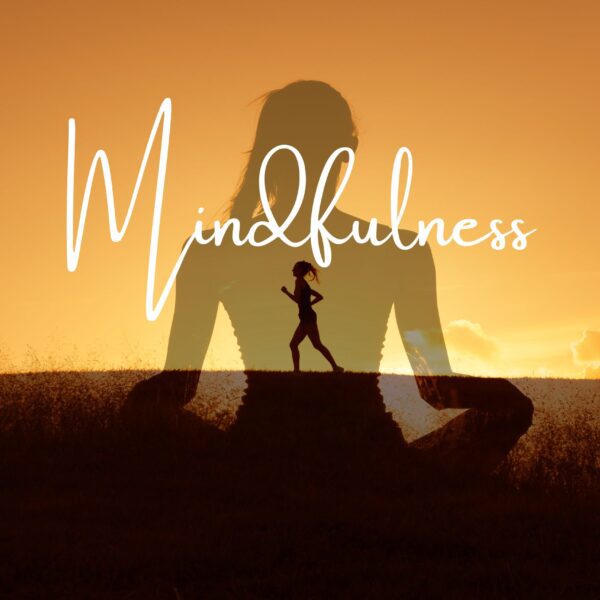“If you just sit and observe, you will see how restless your mind is. If you try to calm it, it only makes it worse, but over time it does calm, and when it does, there’s room to hear more subtle things – that’s when your intuition starts to blossom and you start to see things more clearly and be in the present more. Your mind just slows down, and you see a tremendous expanse in the moment. You see so much more than you could see before.” – Steve Jobs
I’m sure you would have experienced this yourself. As you try to calm your mind, it might leave those thoughts momentarily but then it goes back to that restless state. It becomes so hard to focus on the task at hand when your mind is all over the place.
It’s not just with you, but with everyone. That’s how the human mind is, jumping from one thought to another, making connections. If you’re trying to do something, you need a clear and calm mind. That’s where mindfulness meditation comes in.
Just like Steve Jobs, many successful leaders, CEOs, and founders have found a powerful life tool in mindfulness meditation.
So many influential figures have used meditation to enhance their focus and concentration and channel it toward something they really want to do in their lives.
Meditation is an ancient Hindu practice that comes from the Vedas, ancient Hindu scriptures that date back thousands of years and form the basis for Hinduism.
They contain hymns, chants, and wisdom about spiritual knowledge and self-realization.
In its highest form, meditation, or dhyana as it is known in Sanskrit, is a means to connect with the divine. There are so many different types of meditation practices which we are going to discuss further in this blog and each practice has its unique purpose.
But at its core, meditation is a way to practice mindfulness. It is about bringing your attention to the present moment and being a non-judgmental observer of your thoughts, sensations, and emotions.
It’s a highly effective way to increase your focus, reduce stress, and channel your creativity.
While meditation has been part of Hindu traditions for ages, it’s becoming a very popular practice in today’s fast-paced and hectic world because of its ability to ease stress and improve mental well-being.
It has gained so much recognition because of its numerous benefits for mental and emotional well-being.
Other than reducing stress, mindfulness meditation is very effective in dealing with anxiety, depression, and chronic pain. It improves your attention, concentration, and overall quality of life.

We’ve experienced the benefits of mindfulness meditation firsthand. If you know about us, you would know that Pooja is suffering from fibromyalgia and one of the things advised by our doctor from the very beginning was to do meditation every day for at least 5-10 minutes.
And we can say this from experience that it made a significant difference.
In this part 3 of our mindfulness series, we’re going to talk about mindfulness meditation in particular which focuses primarily on breathing and awareness of body and mind.
While we’ll touch base on other meditation types as well, our main focus will be on mindfulness meditation.
Table of Contents
What Is Mindfulness And What Are Its Benefits
The first blog of this series is dedicated to the concept of mindfulness, what it means and how can you practice mindfulness in your everyday life.
In case you’ve missed that blog, let’s briefly understand this concept so you can understand meditation.
Because of the wandering nature of the human mind, half the time we’re lost in the thoughts of the past or the future.
While this wandering of thoughts is the reason why we’re so creative, it also deprives us of the happiness that comes from living in the moment.
Mindfulness is an ancient Hindu practice that encourages you to live and experience the present moment by being open and non-judgmental.
It is about guiding and anchoring your attention to what’s happening right now rather than thinking about something else.
When you live in the present, your mind becomes more calm and clear. Rather than reacting to what’s happening around you, you approach it with a sense of clarity.
There are so many mental and emotional health benefits to mindfulness that we’ve discussed in this blog. We encourage you to give it a read to understand the concept of mindfulness in detail.
What Is Mindful Living And How To Live Mindfully?
What Is Meditation And What Are Its Benefits
In this modern world, each one of us has heard about the term Meditation. Either on some social media platform, in a magazine, or from a medical practitioner. This is because of its tremendous benefits on your mental and emotional health.
Mental health problems have become so common in today’s world because of the stress and demands of this modern-day lifestyle. That’s why meditation has become so prevalent.
It is a practice that invites us to be aware and present in the moment, to achieve the state of mindfulness. It’s not about escaping reality and going to a different realm, but an exploration into the depths within ourselves.
One of the primary misconceptions about meditation is that it requires you to empty your mind completely. But in reality, it’s quite the contrary. Meditation is about becoming aware of your thoughts without getting entangled in them.
It’s about becoming a gentle observer of your thoughts. As you do so, you’ll feel a sense of calmness.
Since meditation is a tool to achieve mindfulness, the benefits of meditation are the same as those of mindfulness, which we discussed in the What Is Mindfulness blog. But let’s briefly take a look at them again.
Reduced Stress and Relaxation
One of the primary physiological benefits of meditation is its remarkable ability to reduce stress.
As you practice mindful breathing and stillness, your body’s stress response diminishes, and relaxation response activates which leads to a sense of calm and tranquility.
Enhanced Immune System
Stress can trigger a cascade of health issues within the body, setting off a domino effect where one problem leads to another. However, when stress is effectively managed, its positive impacts also ripple through various aspects of health.
One of these benefits is an improved immune system that protects your body against illnesses and infections.
Improved Cognitive Abilities
Meditation has many mental health benefits because it serves as a comprehensive workout for your brain. Because of the focused attention that comes during meditation, your overall cognitive abilities improve including better attention, memory, and problem-solving skills.
Improved Emotional Well-Being
Since meditation allows you to see your emotions from a distance, it improves your emotional resilience. You become better equipped to handle challenging situations and respond to them with equanimity and compassion.
Better Sleep Quality
Meditation relaxes your body and reduces the symptoms of insomnia and sleep disturbances. It allows you to unwind, quiet the mind, and promotes restful sleep.
Enhanced Resilience to Pain
Meditation reduces the perception of pain and increases pain tolerance so it’s very effective in dealing with chronic pain and conditions like fibromyalgia.
What Are The Different Types Of Meditation
Before we dive into the different meditation types, you should understand that each one has its own purpose and way of doing things.
You don’t need to try them all to enjoy the mental and emotional benefits. You can start with mindfulness meditation, and if you find other types interesting, you can explore them later.
So, let’s keep things simple and open-minded as we learn more about meditation. It’s like a journey where you get to choose the path that feels right for you, bringing insights, calmness, and the chance to learn more about yourself.
1. Mindfulness Meditation
Starting with the basics, we have mindfulness meditation, which is about staying in the present moment.
Just focus on your breath, observe your thoughts without getting caught up in them, and experience the calming effect it brings to your mind.
This type of meditation is the main focus of this blog and we’re going to discuss this in detail in the upcoming sections.
2. Focused Meditation
Similar to how mindfulness meditation is about focusing on your breathing, focused meditation is about directing your attention and focusing on to something that engages one of your five senses.
It could be something internal like your breath, or something external like listening to a gong. This meditation helps improve your focus and attention.
3. Love-Kindness Meditation
Loving-kindness meditation is all about cultivating love and positive vibes. The idea is to extend the positive emotions first to yourself and then gradually to others, including your loved ones, and even those with whom you may have challenges. It’s like creating a ripple effect of positivity in your life.
4. Body Scan Meditation
This type of meditation is all about connecting to your physical self. This practice requires you to direct your attention to different parts of your body.
Start by directing your attention to your toes and slowly work your way up and feel every sensation.
When you mindfully scan your body from head to toe, you enhance bodily awareness and release tension. This type of meditation is ideally done for relaxing your physical body and reducing stress.
5. Mantra Meditation
It is a type of meditation where you sit quietly and chant a mantra in your head, it could be a specific word or sound. The mantra serves as a focal point that guides you into a state of deep inner quietness and transcendence.
In the Hindu traditions, it is done by chanting “Om” which is a mantra in itself. It is pronounced as “Aum”.
6. Guided Meditation
This type of meditation is done under the supervision of a Guru or a guide, either in person or through recordings.
Someone guides you through the process, through visualization, breathing exercises, or prompts that will help you evoke certain experiences or insights
Although there are a lot of other meditation types as well, these are the most common ones. You don’t have to try them all. You can explore whichever intrigues you.
Since this blog is about mindfulness meditation, let’s explore a little deeper into this specific type.
What Is Mindfulness Meditation
I don’t want to bore you by repeating the same thing over and over again but the concept revolves around the same thing we’ve discussed a few times in this mindfulness series.
Mindfulness meditation is the most common type of meditation that helps you become more mindful in your everyday life. It is about observing your thoughts and feelings without getting entangled in their narratives.
It’s about taking a step back and becoming the silent witness to the continuous stream of consciousness. Mindfulness meditation encourages an open curiosity toward the fluctuations of the mind.
Through this lens of awareness, you develop an intimate understanding of your mental landscape.
You learn to let go of the past, from the grip of negative memories and regrets. Also, you give up the urge to rush forward into an uncertain future.
Mindfulness meditation offers you a safe space where the past and the future lose their grip, and you experience the present moment with a sense of richness.
When you practice mindfulness meditation regularly, mindfulness becomes a way of life. It is a technique that enables you to live in the moment.
You experience the sensations, thoughts, and emotions with a sense of non-judgment, acceptance, and awareness.
How To Practice Mindfulness Meditation
Finally, let’s take a look at how you can cultivate this transformative practice in your everyday life.
1. Find Your Sanctuary
Find a quiet and comfortable place where you can sit peacefully and no one will disturb you. It doesn’t have to be a dedicated meditation room or something, just a small space in your home.
There’s a small Puja room or space in every Indian household where we offer daily prayers to God. This space can serve as your sanctuary.
2. Get Comfortable
Make sure you sit in a comfortable position. You can either place a cushion on the floor and sit on that or you can use a carpet. Your posture should be straight. Place your hands on your lap or knees and close your eyes.
3. Focus On Your Breath
Now bring your attention to your breath and focus on the rhythmic inhale and exhale. Don’t try to control your breath, let it flow naturally.
Let this breath be your anchor to the present moment. Notice the coolness of your breath when you inhale and the warmth when you exhale.
4. Observe Without Judgment
While you’re focusing on your breath, certain thoughts will naturally arise. You will go deeper into these thoughts without realizing but the main thing is not to get caught in the content of the thoughts. Don’t get affected by them, just observe them with a sense of non-judgmental awareness.
5. Cultivate Gentle Awareness
One crucial aspect of mindfulness meditation is a gentle redirection of attention is required when the mind wanders.
As soon you realize that you are now thinking about something else again rather than focusing on your breath, gently guide it back to your breath.
It will happen frequently, but your job is to guide it back to your thoughts. With practice and over time, this frequency will significantly come down and that’s when you’ll start seeing the benefits of meditation.
6. Start Small
If you try to meditate for a longer period initially, it might become very overwhelming for you. You might also fall asleep if you’re not focused at all. So, like everything else, whenever you try to learn something new, you start small.
Start with short 5-10 minute sessions and then gradually increase the duration as you get comfortable. Overdoing anything initially is not sustainable. Remember, consistency is the key. Aim for regular and manageable sessions.
7. Incorporate Mindfulness into Daily Activities
Mindfulness is not just about formal meditation sessions, but about being mindful in your daily activities. Meditation is just a way to learn mindfulness.
Whether you’re eating, walking, or doing chores, make sure you pay full attention to the task at hand.
Our next blog is on how to be mindful in your day-to-day activities so give it a read once you’re done with this one.
Wrapping Up – Mindfulness Meditation
Mindfulness meditation is a very popular concept because of its ability to reduce stress and bring calm in this fast-paced and hectic world.
The good thing about mindfulness meditation is you don’t need any tools or equipment to practice it, you can do this whenever and wherever you want.
All you need to do is pause, breathe, and reconnect with the present moment. It is something you can turn to when you’re stressed, uncertain, or overwhelmed.
The benefits are not limited to the specific moment you practice it but to various aspects of your mental, emotional, and even physical well-being. So, make sure you include mindfulness meditation in your daily self-care routine.
Remember, practicing mindfulness meditation is your personal journey, there are no finish lines or certificates of completion. Instead, there are the ever-renewing moments of awareness.
Here’s to the continued exploration of mindfulness, one breath at a time. Namaste!







Leave a Reply